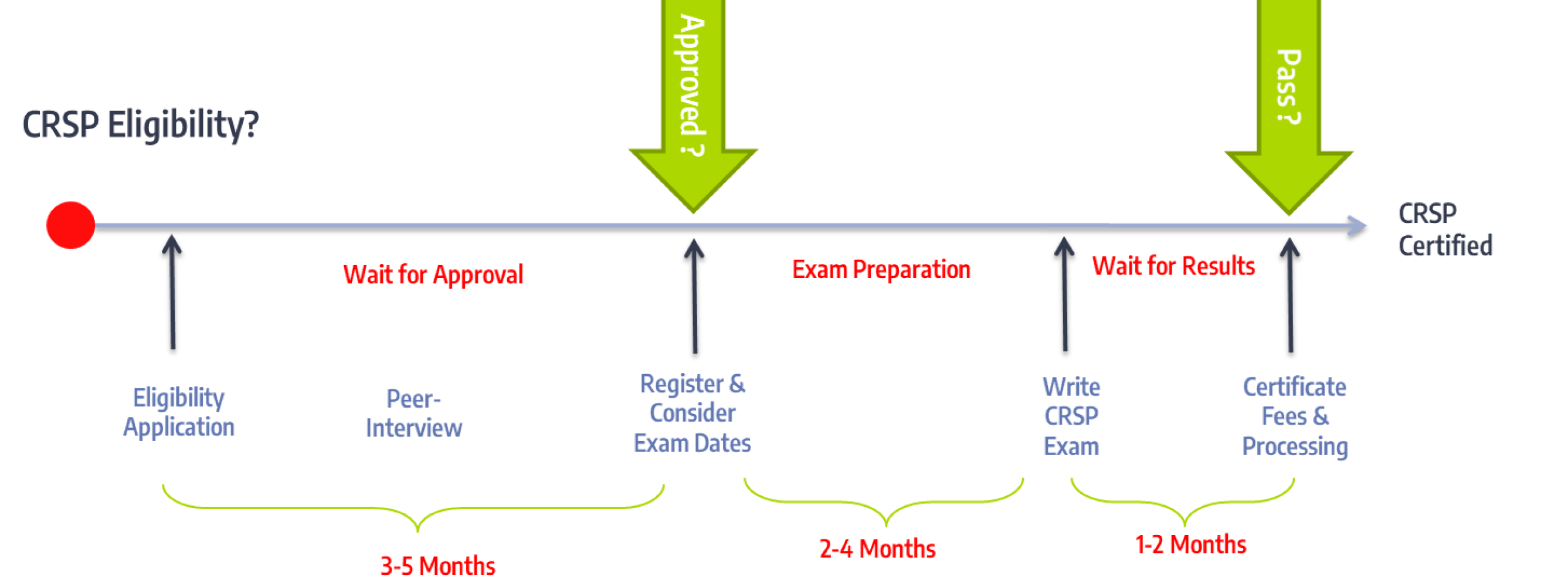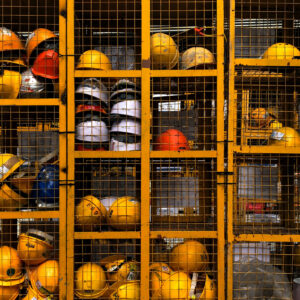 About the CRSP
About the CRSP
Who administers the exam?
The Canadian Registered Safety Professional certification is a widely accepted form of recognition by industry and government in Canada.
This certification is given by the Board of Canadian Registered Safety Professionals (BCRSP), a public interest and not-for-profit association. Founded in 1976, this group is dedicated to the principles of health and safety as a profession.
The BCRSP administers occupational health and safety exams and certifies qualified occupational health and safety professionals. According to the BCRSP, “many employers require employees and potential job candidates to acquire the CRSP certification as a means of qualification for safety positions. It also allows the BCRSP to ensure that the highest standards of excellence and professionalism are maintained at all times and by all certificants.”
Is The CRSP Suited For You?
Here is a quote from the BCRSP website that briefly answers these questions:
“OHS Professionals are designers of strategy relating to the organization and management of OHS within the wider context of business processes and external regulatory, market and societal influences. They are influential with senior management and are involved in problem solving and organizational review and change as advisers and consultants.” (Note: be sure to check out the BCRSP’s official website for a more in depth summary.)
Who qualifies for the CRSP?
To qualify for the certification, you’ll be required to meet qualification standards, including education and experience requirements.
At minimum, candidates should have successfully completed a bachelor’s degree in any field or a 2-year diploma or certificate with a minimum of 900 hours or 60 credits in occupational health and safety (OHS) or equivalent from a recognized academic institution (e.g. Toronto Metropolitan University).
It should be noted that for candidates who apply with a bachelor’s degree, they must demonstrate sufficient professional development in OHS to qualify.
This includes 48 months of professional level OHS experience obtained within the last 72 months, which also means a minimum of 900 hours per calendar year of practice in OHS. (Note: requirements may change or be updated year to year. Check the official BCRSP website for the most accurate information.)
How do you get certified for the CRSP?
Let’s begin by going through this timeline below, which outlines the CRSP certification process. All prospective candidates begin by going through the CRSP eligibility process. Once they have been accepted, they continue with the application and registration processes. Throughout this time, candidates should be studying and reviewing the required materials. Approximately five to nine months after beginning their journey, they will be able to write the CRSP exam. Then it will take between one to two months to receive their exam results, after which any membership and processing fees will be required.
Don’t forget to check out our crash courses!
Take control over your career.

Let’s break down each step and take a closer look.
Step 1: Applying
After candidates have determined they are eligible, they should fill out and submit an application and all required supporting documentation to the BCRSP. And, they are required to pay a non-refundable application fee to the BCRSP for processing (check the official BCRSP website for exact details).
The application form requires details concerning formal education, professional development, and related experience. Additionally, a reference questionnaire and practice questionnaire must be completed by individuals who have a sound knowledge of the applicant’s work performance, such as a direct employer or manager. It’s important to ensure that all information submitted in the application along with any required documentation is accurate without any errors. Make sure to review the eligibility requirements before submitting an application as the application fee is non-refundable. Following these steps will minimize processing time and avoid unnecessary delays.
Applicants whose first language is neither English nor French will be required to submit documentation verifying proof of language proficiency. International applicants may also need to provide additional documentation, such as academic credentials that have been translated to English or French and can be verified by an official translator. International credentials must be submitted to a Canadian Credentialing Agency prior to application submission.
Once received, the BCRSP will review the candidate’s profile and conduct any necessary due diligence.
Step 2: Peer Interview
After submitting the application, candidates may have their file selected for an interview. These are usually hosted by Regional Screening Committee volunteer(s) who are certified CRSPs. A volunteer certified CRSP will contact you to mutually arrange a time and location for the interview, depending on where both parties are located.
Step 3: Further Waiting
From the time of submission, it will take roughly three to five months to hear back from the BCRSP. During this period, the BCRSP offices will go through all of the submitted documentation and perform the necessary due diligence required. A common question our team receives is “why does the process take so long?” To put it simply, there’s several steps which the BCRSP has to go through to verify the documents, confirm references, and process the information. (Tip: in order to streamline the experience, ensure that all aspects of the application are complete before submitting!)
Step 4: Approval
Once a candidate has been approved to take the examination, they will be sent an examination authorization email with the exam scheduling information.
It’s time for the candidate to consider exam dates and register. Te dates for writing the CRSP exam can vary. There are usually 3 testing periods throughout the year, but make sure to check the BCRSP’s official schedule for accurate dates and times.
Step 5: Consider the Right Exam Date
After being approved to sit the CRSP examination, applicants have twelve months to make their first attempt. However, following the first attempt, they will only have another 12 months for the second and third attempts in case they do not achieve a passing grade. This is very important to consider when planning for the exam!
Candidates may decide to write the exam either immediately or at the end of the 12 month window. In terms of when would be the best time to sit the exams, it all comes down to preparation, scheduling, and exam centre availabilities. Check out this blog post for more details on how to pick the right exam date.
Step 6: Register for an Exam Date
The best advice for anyone who is planning to write the CRSP exam is to set a date congruent with your schedule and register (including paying an exam registration and exam centre fee). After taking some time to consider your individual timeline and how comfortable you are with the content, setting a date and following through by registering is the perfect way to stay accountable as it sets a deadline for you to work towards.
Remember, the BCRSP application process takes roughly 3 to 5 months. Most candidates take on this certification alongside their work or other full-time commitments, so it’s easy to forget about it and set it aside when convenient. Tip: by selecting and committing to an exam date early on, you give yourself a fixed target to keep in mind as you study.
Step 7: Exam Preparation
Create an exam preparation strategy that works. Consider the various aspects of the preparation process, including: how to approach and structure your study plan, what competencies you will be required to know, exam details and references, the preparation time frame, studying methods and recommendations, and how our CRSP Exam Crash Course can provide you with a proven and tested method of achieving your goals.
Learn more about how to create the right exam preparation strategy for you.
Step 8: Write the Exam and Wait for the Results
All the examinations are written via Computer Based Testing (CBT). Following the exam, it usually takes 2 to 3 months for candidates to receive their results. (Tip: make sure to factor these gaps into your plan!) Once you get your passing results, it’s time to celebrate! You’ll also have to pay $250 for certification fees and processing, and this fee will renew annually at the beginning of each year after the first year.
If you don’t pass, it’s time to contact us to create a custom study plan for you to try again.
How much does this exam cost?
The eligibility application is about $525, unless the applicant has other similar designations such as CSB or NEBOSH from other countries, in which case they will pay only $75.00. Each exam attempt will cost $175 for registration as well as approximately $170 for exam centre fees. After passing the exam, candidates will be required to pay $250 for certification fees and processing, and this fee will renew annually at the beginning of each year after the first year. Thus, the overall CRSP examination process costs on average $1,120.







